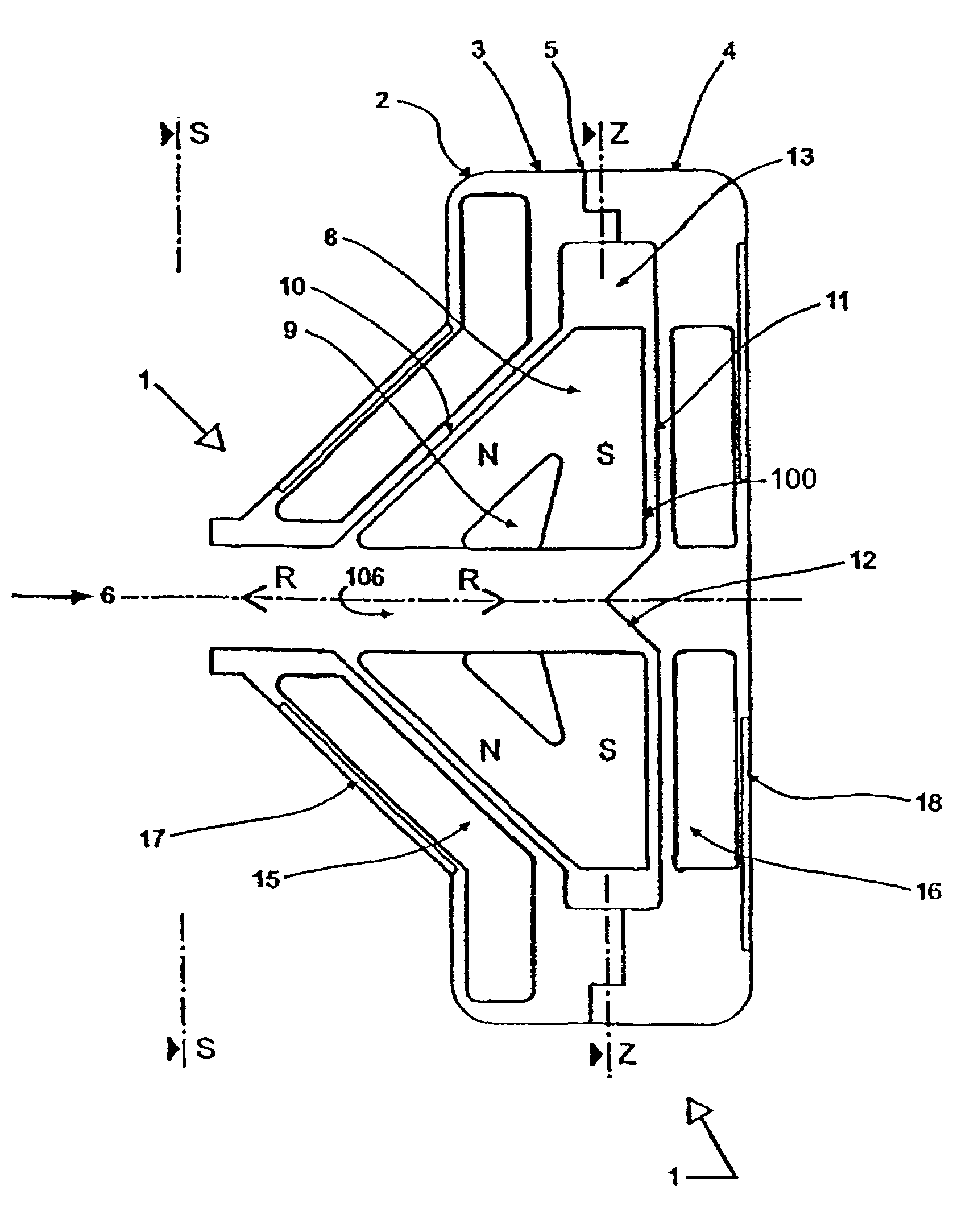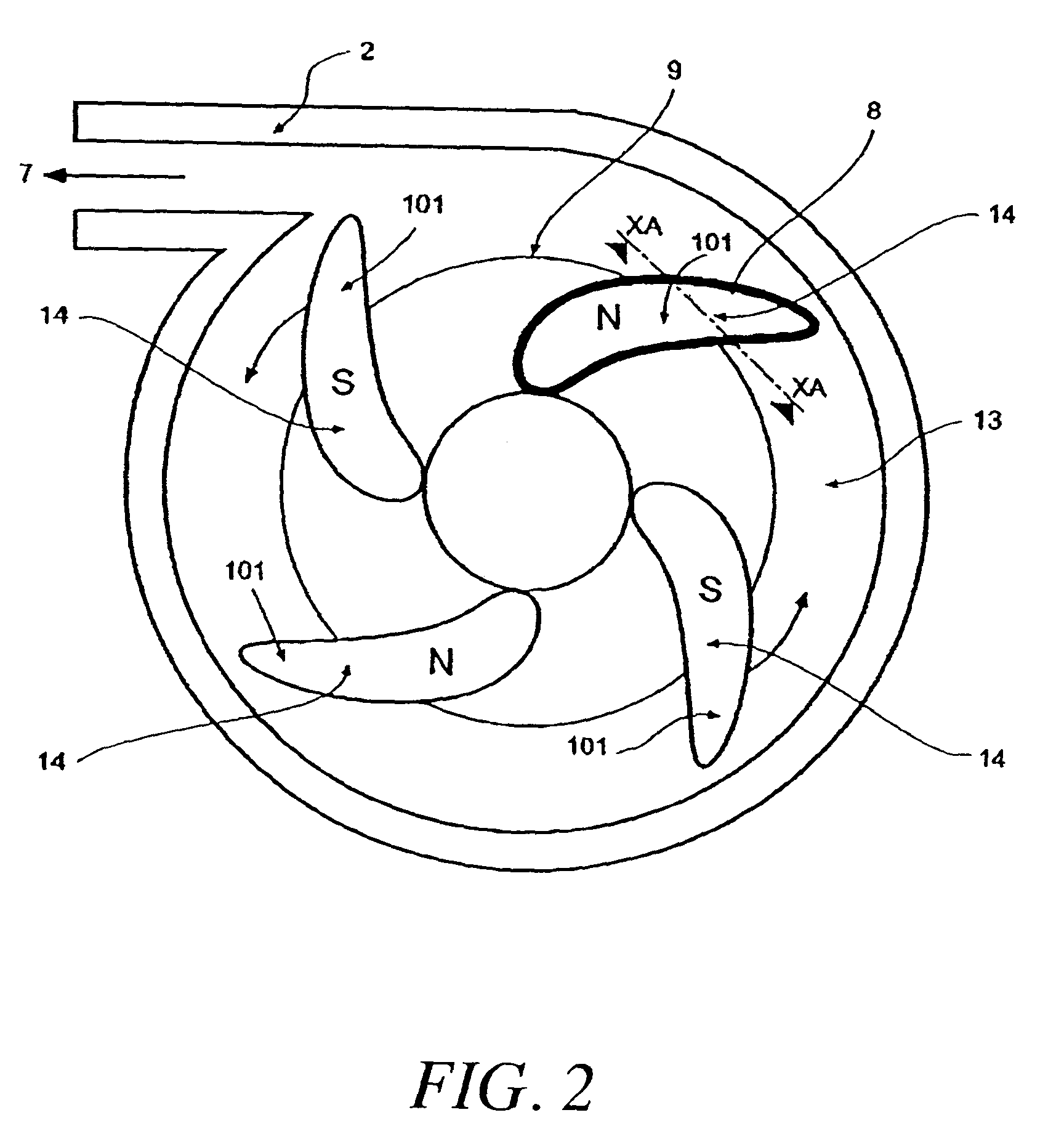Rotary pump with hydrodynamically suspended impeller
a technology of hydrodynamic suspension and rotor, which is applied in the direction of prosthesis, liquid fuel engine, therapy, etc., can solve the problems of reducing the service life of the rotor of the motor providing the shaft torque, the rotor of the motor remaining to be supported, and the seal on the shaft may leak, etc., to achieve the effect of reducing the radius
- Summary
- Abstract
- Description
- Claims
- Application Information
AI Technical Summary
Benefits of technology
Problems solved by technology
Method used
Image
Examples
third embodiment
[0089]With reference to FIGS. 7 to 15 inclusive there is shown a further preferred embodiment of the pump assembly 200.
[0090]With particular reference initially to FIG. 7 the pump assembly 200 comprises a housing body 201 adapted for bolted connection to a housing cover 202 and so as to define a centrifugal pump cavity 203 therewithin.
[0091]The cavity 203 houses an impeller 204 adapted to receive magnets 205 within cavities 206 defined within blades 207. As for the first embodiment the blades 207 are supported from a support cone 208.
[0092]Exterior to the cavity 203 but forming part of the pump assembly 200 there is located a body winding 209 symmetrically mounted around inlet 210 and housed between the housing body 201 and a body yoke 211.
[0093]Also forming part of the pump assembly 200 and also mounted external to pump cavity 203 is cover winding 212 located within winding cavity 213 which, in turn, is located within housing cover 202 and closed by cover yoke 214.
[0094]The winding...
PUM
| Property | Measurement | Unit |
|---|---|---|
| distance | aaaaa | aaaaa |
| distance | aaaaa | aaaaa |
| diameter | aaaaa | aaaaa |
Abstract
Description
Claims
Application Information
 Login to View More
Login to View More - R&D
- Intellectual Property
- Life Sciences
- Materials
- Tech Scout
- Unparalleled Data Quality
- Higher Quality Content
- 60% Fewer Hallucinations
Browse by: Latest US Patents, China's latest patents, Technical Efficacy Thesaurus, Application Domain, Technology Topic, Popular Technical Reports.
© 2025 PatSnap. All rights reserved.Legal|Privacy policy|Modern Slavery Act Transparency Statement|Sitemap|About US| Contact US: help@patsnap.com



